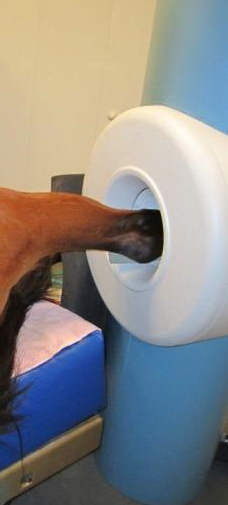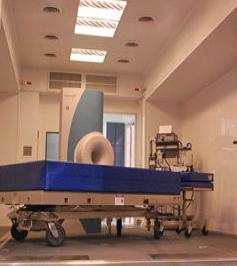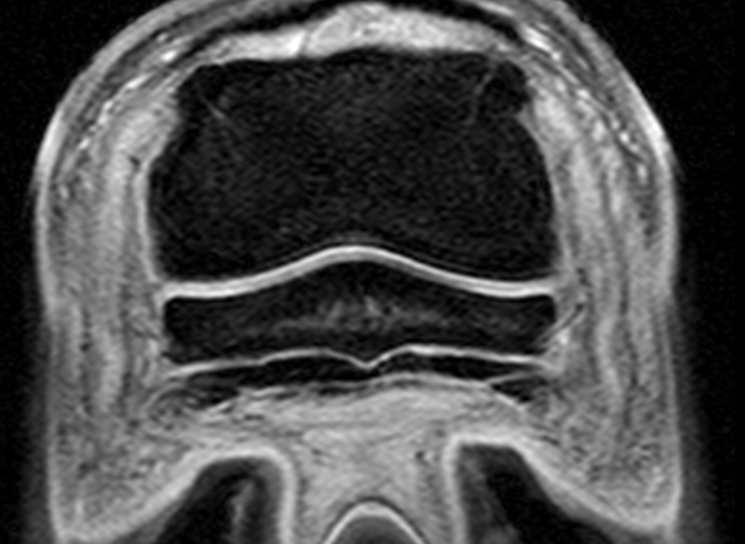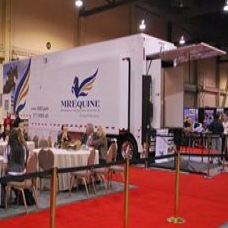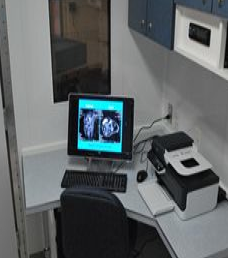Welcome to Chino Valley Equine Hospital
- 2945 English Place, Chino Hills, California, 91709, USA. Telephone (909) 628-5545

Magnetic Resonance Imaging
Chino Valley Equine Hospital is pleased to announce that we will be using the mobile MRI services of MREquine, which uses a 1.5T high field magnet.
Lameness is one of the main reason that horses are reffered to our hospital, and unfortunately, x-rays are not always able to tell us the entire story.
MRI is routinely used in human medicine and is rapdily expanding to the small animal veterinary field. Progress has been made to permit larger animals, such as horses, to enter these machines.
MRI has been used to evaluate orthopedic injuries in horses in some veterinary hospitals for more than ten years. It has resulted in the diagnosis of many conditions which were previously unrecognized and has resulted in new treatments, such as navicular bursoscopy, to treat flexor tendon injuries in the hoof.
Low Field Systems - 0.3 Tesla Magnet - Standing
There is one MRI system, marked by Hallmarq from the UK that allows the acquisition of images in standing, heavily sedated horse. The magnet is a 0. 3T (Tesla) permanent magnet mounted on and in the floor of an radiofrequency shielded room. Because these magnets are low field, the signal from the patient, (from which the images are generated) is weak and to compensate for this, image acquisition can take a long time, often many hours.
In addition, the acquisition of images is complicated by patient motion, both voluntary movement but also just the normal rocking of a horse standing. These systems use motion correction software to help compensate for patient movement, but because of the low field configuration, prolonged scan time and patient motion, a diagnostic study can often be challenging to acquire.
Because of the physical limitations of the technology, acquisition of thin slice high contrast images can be challenging and this can result in a suboptimal and potentially non diagnostic study in many patients.
High field Systems - 1.5 Tesla Magnet - General Anesthesia
The most important factor is that the higher the field strength, the more signal emanating from the patient that is available to generate images.
While there are risks associated with any anesthesia, modern advances in drugs and equipment mean that equine anesthesia is now routine and considered very safe.
High field magnets allow image acquisition faster than low field magnets and this results in reduced scan time.
From a practical perspective, having accepted the need for anesthesia, it makes much more sense to image a horse in a high field magnet than a low field magnet, as image quality will be superior, more anatomy can be covered and the study can be completed in less time, thus minimizing potential anesthesia related complications.
